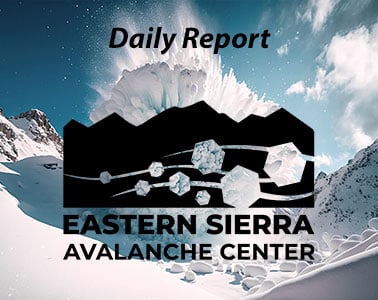By Deb Murphy
If the decision to approve the $500,000 grant for the Owens River Trail was based entirely on community support and turnout for the site visit, area residents could start planning their trips down a clean, 6.3-mile stretch of the river.
According to Polly Escovedo with the California Department of Natural Resources, the Inyo County Water Department’s proposal made it through a rigorous review process and was the last site visit on her schedule.
It was also the best attended with Inyo County staff, area Tribes, Forest Service, California Department of Fish and Wildlife, Friends of the Inyo, Sierra Club, area businesses and residents, Friends of the Los Angeles River, Sierra Mountain Guides, Disabled Sports of Eastern Sierra and Los Angeles Department of Water and Power all crammed into the Visitors’ Center south of Lone Pine.

Polly Escovedo, head of the site visit from the Department of Natural Resources, and Randy Short get a look at the tule tool.
Escovedo explained the California River Parkways Grant pool totaled $10 million with $13.5 million in grant requests. The agency anticipated proposals for parkways on the banks of rivers. Project Manager Larry Freilich’s vision would substitute the river for dirt, a concept Escovedo described as “innovative.”
Freilich gave a brief overview of the project that would clear lengths of the river channel choked by tules. The tules, while beneficial to the warm water fishery, are a nightmare for paddlers and anglers as well as the ecosystem of the river itself.
He described last weekend’s efforts by 28 volunteers to clear a relatively short stretch of the waterway as an example of the community partnership element of the project. One of the river volunteers even invented a specialized tule tool to whack the reeds and drag them out of the river bed.
The project would also “create a more efficient river,” Freilich said. The tules and their tendency to clog and slow the river have been a sore point since the Lower Owens River was re-watered in 2007.

The start of the tour of the proposed Owens River Trail at what would be the intake off Narrow Gauge Road north of Lone Pine. The group was greeted by lemonade, brownies and examples of the tules laying dead on the bank.
Even in death, the tules have a negative impact, creating a rotting bio mass that sucks oxygen out of the water, oxygen fish need to survive. He explained that the project would serve as a test case. “If the water quality improves, we can do the same” on other stretches of the river.
While a primary focus of the water trail is to provide unmatched mobility for the disabled athletes, there are already businesses in the valley primed to provide guided tours and shuttles from Lone Pine for canoers and kayakers of all kinds.
From the Visitors’ Center, the group caravanned Tuesday to the proposed intake, off Narrow Gauge Road, then to a bluff that overlooked a green meadow and tree-lined river in the middle of the high desert. Once completed, the intake would be handicapped-accessible, provide parking and a restroom but no other infrastructure.

Project Manager Larry Freilich and DNR staff take advantage of shade on a summit overlooking the intake and river course.
Escovedo addressed some of the devils in the detail. The project requires an agreement between the County and LADWP. To date, LADWP has not fully endorsed the project, rather taking a wait-and-see stance.
Greg Loveland, LADWP’s manager of northern aqueduct operations asked questions and took notes as Escovedo explained that site control, or the agreement between the land owner and project management had to be in place.
“You need to agree on the roles and responsibilities (of each entity), who takes care of what for the next 25 years and if somebody bails, who assumes full responsibility.”
The “soft deadline” for the California Environmental Quality Act study, the agreement between Inyo and LA and construction is May, 2020.
On the bright side, Escaufedo assured the group that the DNR had awarded grants based on agreements with multiple agencies in the past.
Discover more from Sierra Wave: Eastern Sierra News - The Community's News
Subscribe to get the latest posts sent to your email.
















